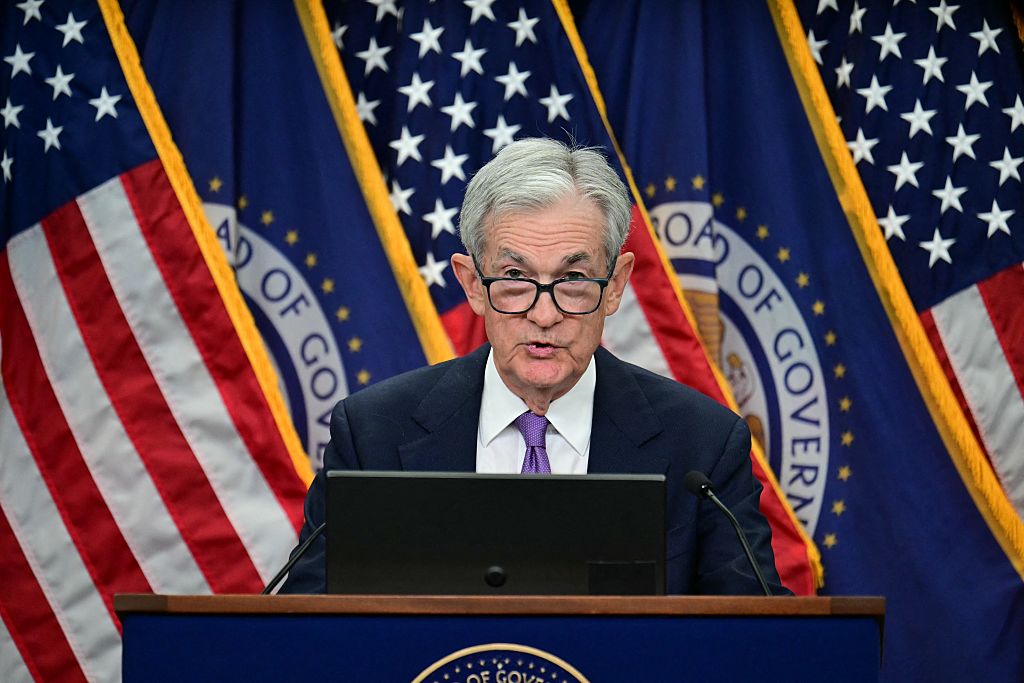The 5 Best Bond Funds for 2017
The trick next year will be to avoid losing money.


A funny thing has been happening in the bond market lately. Bond yields had been falling for three years—and, indeed, with ebbs and flows since 1981. The 10-year Treasury yield hit a record closing low of 1.37% on July 8.
NEW PICKS FOR 2018: 4 Best Bond Funds for Retirees in 2018
But since then, bond prices, which move inversely from their yields, have been sliding—a fall that has gathered momentum since Election Day amid predictions of faster growth and rising inflation under a Trump administration and the growing likelihood that the Federal Reserve will raise short-term interest rates in December and perhaps several more times in 2017. On November 23, the 10-year Treasury yielded as much as 2.42%—its highest level since July 2015.
Is this the beginning of the end for the 35-year-old bond bull market or just a head fake? I don’t profess to know. But I do know this: Bond yields have been ridiculously low for years now. The bond market is in a dangerous bubble, and bubbles always end badly. What’s more, the extra yield that bond investors get today by buying intermediate- and long-term bonds is puny—and not nearly worth the risks of owning these bonds. The longer a bond’s maturity, the more it will fall in price when bond yields rise.
From just $107.88 $24.99 for Kiplinger Personal Finance
Become a smarter, better informed investor. Subscribe from just $107.88 $24.99, plus get up to 4 Special Issues

Sign up for Kiplinger’s Free Newsletters
Profit and prosper with the best of expert advice on investing, taxes, retirement, personal finance and more - straight to your e-mail.
Profit and prosper with the best of expert advice - straight to your e-mail.
Don’t get me wrong: You should still own bonds—unless you fancy holding big slugs of cash-type investments, which still pay virtually nothing. Bonds lower your portfolio’s volatility—and almost always shine during stock sell-offs. But keep your bond durations short, really short. (Duration is a better measure of a bond or bond fund’s interest-rate sensitivity than maturity.)
With that in mind, here are my five favorite bond mutual funds for 2017, in order from safest to riskiest. My picks are primarily designed to limit losses in a rising-rate environment. Returns are through November 25.
You can’t find bond funds that are more cautious than Vanguard Short-Term Investment Grade Investor (symbol VFSTX). The fund’s duration is a mere 2.6 years. That suggests that if rates were to rise by one percentage point, the fund’s net asset value per share would dip just 2.6%. The fund’s current yield of 1.7% would offset most of that loss and would rise as rates rose. The maturities of the fund’s bonds are so short that, in a rising-rate environment, it would take little time for many of the fund’s low-yielding bonds to mature and be replaced by new, higher-yielding bonds.
Reflecting the high quality of the fund’s holdings, the average credit rating of its bonds is single-A, further underscoring its low risk. Just don’t count on it earning more than 1% or 2% next year. The fund benefits from a low annual expense ratio of 0.20%.
Vanguard Limited-Term Tax-Exempt Investor (VMLTX) invests in municipal bonds, but otherwise it is virtually a carbon copy of Vanguard Short-Term Investment Grade. The muni fund yields 1.2%, has a duration of 2.5 years, invests in municipal bonds with an average credit quality of double-A, and charges 0.20% annually. For an investor in the highest, 43.4% tax bracket, a 1.2% tax-free yield is the equivalent of 2.1% from a taxable bond fund.
Both this fund and the Short-Term corporate fund are actively managed but stick close to their benchmarks. In the low-yielding, short-maturity end of the bond market, Vanguard’s low fees are a big advantage. You can trim your fees even more, to 0.10% annually, if you pony up $50,000 to invest in the Admiral share-class versions of these funds (the Investor share class requires just $3,000 to start). The symbols for the Admiral share classes for the taxable and tax-free funds are VFSUX and VMLUX, respectively.
Metropolitan West Unconstrained Bond (MWCRX) yields 2.4% and has an average duration of 1.4 years, which means the fund will likely make money in a rising-rate environment (as long as rates don’t rise too much too fast). The average credit quality is triple-B. More than half of its assets are in asset-backed bonds, mainly nongovernment-backed residential and commercial mortgages. More than a few bond managers have done well in recent years by investing in private mortgages, which have rebounded sharply from the 2008 financial crisis but still carry a taint.
The quartet of managers who steer this $2.5 billion fund, which was launched in 2011, have proved their mettle running the older, more conventional Metropolitan West Total Return Fund (MWTRX), a member of the Kiplinger 25. Unconstrained Bond has returned an annualized 5.1% over the past five years. In short, this fund takes more credit risk than the two Vanguard funds, but it’s still unlikely to suffer big losses due to higher rates. Annual expenses are 1.04%.
Osterweis Strategic Income (OSTIX) earns its keep by outsmarting the bond-rating agencies. The fund, which mostly owns junk bonds, recently held 59% of its assets in bonds rated single-B or below, which is a treacherous neighborhood (double-B is the highest junk-bond rating). But diligent credit research by Carl Kaufman and his two comanagers has enabled the fund to sidestep most of the many pitfalls in this high-risk section of the bond market.
Aside from the managers’ smarts, Osterweis has a couple of other advantages over other junk funds. First, it’s not a pure junk fund; the managers are flexible and cautious. Currently, for instance, 22% of assets are in cash as the managers wait for better opportunities. Second, the fund’s duration is just 1.5 years. That means that most of the fund’s bonds are close to maturing, making it easier to tell which firms can afford to meet their obligations. Expenses are 0.82%. Over the past five years, the fund returned an annualized 5.2%. It yields 5.5%.
As its name suggests, Pimco Income Fund D (PONDX) focuses on producing income—a rarity at Pimco, where most funds aim to produce above-average total returns. Income yields 3.1%. Like the Metropolitan West fund, Pimco Income has an outsize position in nongovernment-backed mortgages, at last word 54% of assets. The fund ranges widely, investing in foreign bonds, including a big slug in emerging markets, as well as investment-grade corporates and junk bonds. The fund’s duration is 2.8 years. Over the past five years, Income returned an annualized 8.7%. I think the fund will do well, but future returns won’t be anywhere near that high. Annual fees are 0.79%.
As for how to use these funds in your portfolio, allocations will depend on your proximity to retirement and your tolerance for risk. The two Vanguard funds are least likely to post losses and should perform best during stock market sell-offs. That makes them best-suited for retirees who are drawing money from their investments. Investors who are younger and can tolerate big losses during stock bear markets should invest in the riskier funds.
SEE THE 2018 PICKS: Best Bond Funds for Retirement Savers in 2018
Steve Goldberg is an investment adviser in the Washington, D.C., area.
Profit and prosper with the best of Kiplinger's advice on investing, taxes, retirement, personal finance and much more. Delivered daily. Enter your email in the box and click Sign Me Up.

-
 How to Plan a Microvacation That Actually Feels Restful
How to Plan a Microvacation That Actually Feels RestfulHow a simple long weekend can boost your mood, reduce stress and make winter feel shorter.
-
 We're retired and fight more than ever. Should we take a break?
We're retired and fight more than ever. Should we take a break?Can taking a break save a marriage? We asked professional relationship therapists for advice.
-
 Turning 59½: 5 Planning Moves Most Pre-Retirees Overlook
Turning 59½: 5 Planning Moves Most Pre-Retirees OverlookAge 59½ isn't just when you can access your retirement savings tax-free. It also signals the start of retirement planning opportunities you shouldn't miss.
-
 The December Jobs Report Is Out. Here's What It Means for the Next Fed Meeting
The December Jobs Report Is Out. Here's What It Means for the Next Fed MeetingThe December jobs report signaled a sluggish labor market, but it's not weak enough for the Fed to cut rates later this month.
-
 Best Mutual Funds to Invest In for 2026
Best Mutual Funds to Invest In for 2026The best mutual funds will capitalize on new trends expected to emerge in the new year, all while offering low costs and solid management.
-
 The November CPI Report Is Out. Here's What It Means for Rising Prices
The November CPI Report Is Out. Here's What It Means for Rising PricesThe November CPI report came in lighter than expected, but the delayed data give an incomplete picture of inflation, say economists.
-
 The Delayed November Jobs Report Is Out. Here's What It Means for the Fed and Rate Cuts
The Delayed November Jobs Report Is Out. Here's What It Means for the Fed and Rate CutsThe November jobs report came in higher than expected, although it still shows plenty of signs of weakness in the labor market.
-
 December Fed Meeting: Updates and Commentary
December Fed Meeting: Updates and CommentaryThe December Fed meeting is one of the last key economic events of 2025, with Wall Street closely watching what Chair Powell & Co. will do about interest rates.
-
 What Fed Rate Cuts Mean For Fixed-Income Investors
What Fed Rate Cuts Mean For Fixed-Income InvestorsThe Fed's rate-cutting campaign has the fixed-income market set for an encore of Q4 2024.
-
 The Delayed September Jobs Report Is Out. Here's What It Means for the Fed
The Delayed September Jobs Report Is Out. Here's What It Means for the FedThe September jobs report came in much higher than expected, lowering expectations for a December rate cut.
-
 October Fed Meeting: Updates and Commentary
October Fed Meeting: Updates and CommentaryThe October Fed meeting is a key economic event, with Wall Street turned into what Fed Chair Powell & Co. did about interest rates.